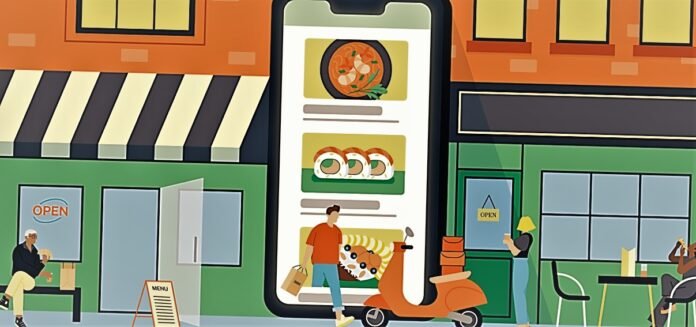The Rise of Virtual Restaurants on Delivery Apps
Virtual restaurants are becoming increasingly popular in the US, with at least one in every five restaurant listings on some delivery platforms in some cities. They are restaurants that don’t have a physical presence and prioritise delivery and pick-up. They can either be ghost kitchens or virtual versions of existing restaurants. An analysis of restaurant listings shows that there are tens of thousands of virtual restaurants, prompting at least one delivery app company to consider reigning them in.
The Impact of Virtual Restaurants
While virtual restaurants drive business revenue through exposure and often bring in new customers, experts warn that unoriginal listings can crowd the dining landscape. How visible these online listings are can lead to a 5% increase in revenue for restaurants. However, restaurateurs with dozens of listings can also take customers from other businesses. The rise of virtual restaurants is a boon for businesses that are struggling, but customers of delivery platforms tend to prioritize cost and speed, both of which are easier to provide than a one-of-a-kind in-person experience.
The Economics of Virtual Restaurants
The motivation for opening virtual restaurants comes down to economics, with restaurant owners like Rich, the owner of Spinners Pizza on Bleecker Street in Manhattan, operating more than 60 virtual brands across various delivery platforms. Rich’s virtual brands operate under different names, but they all serve pizza. Rich claims that the multiple listings keep his business afloat because “the rest of the week isn’t enough to support the rent, the workers, the electric.” The rise of virtual restaurants is a reflection of an industry with 5% profit margins, and nearly 9 in 10 operators say they are less profitable than they were pre-pandemic, according to the National Restaurant Association.
The Impact of Virtual Restaurant Names and Identities
Virtual brand identities are easier to shape, providing advantages for virtual restaurants. Restaurant names can lure in customers, as names such as Paulie’s Pizza or New York Thin Crust Pizza exist only on the internet. Customers tend to order from virtual restaurants based on name alone, such as Pepperoniville. Snappy names and convenience helped convince Ryan Benson, a marketer who lives in Los Angeles’ Sherman Oaks neighbourhood, to order from The Meltdown. However, the sandwich so enamoured Benson that he only discovered the restaurant’s true identity after he made plans to eat there in person. The Meltdown was actually a virtual version of Denny’s, leading Benson to ask whether this was ethical.
Accountability and Safety Concerns with Virtual Restaurants
Virtual restaurants are coming under scrutiny due to concerns over accountability and safety. Customers are questioning whether virtual restaurants have their own kitchen ratings and health ratings. An address on Hudson Street in Manhattan is associated with nine different virtual restaurants, but searches on the New York City Department of Health and Mental Hygiene’s website for all nine restaurants at that address returned zero results. This highlights concerns about the ability of virtual restaurants to avoid accountability.
The Role of Delivery Platforms in Ensuring Accountability
Delivery platforms are now being forced to think carefully about their engagement with virtual restaurants. On DoorDash, virtual restaurants are labeled, and customers can access details about the physical location of the kitchen. Virtual brands are required to maintain documentation of their compliance with local health and safety regulations. Uber Eats has also announced new guidelines for virtual kitchens, tightening requirements and offering restaurants help to improve their listings. These changes include the removal of virtual brands that offer identical or near-identical menu items and increasing the customer rating needed to exist on the platform.
Conclusion
Virtual restaurants are facing concerns over accountability and safety. Customers are questioning whether virtual restaurants have their own kitchen ratings and health ratings, and there are concerns about the ability of virtual restaurants to avoid accountability. Delivery platforms are now being forced to ensure accountability and safety. DoorDash and Uber Eats have both introduced guidelines to ensure that virtual restaurants meet health and safety regulations. While these changes could be detrimental to some virtual restaurants, they are necessary to ensure accountability and safety.











